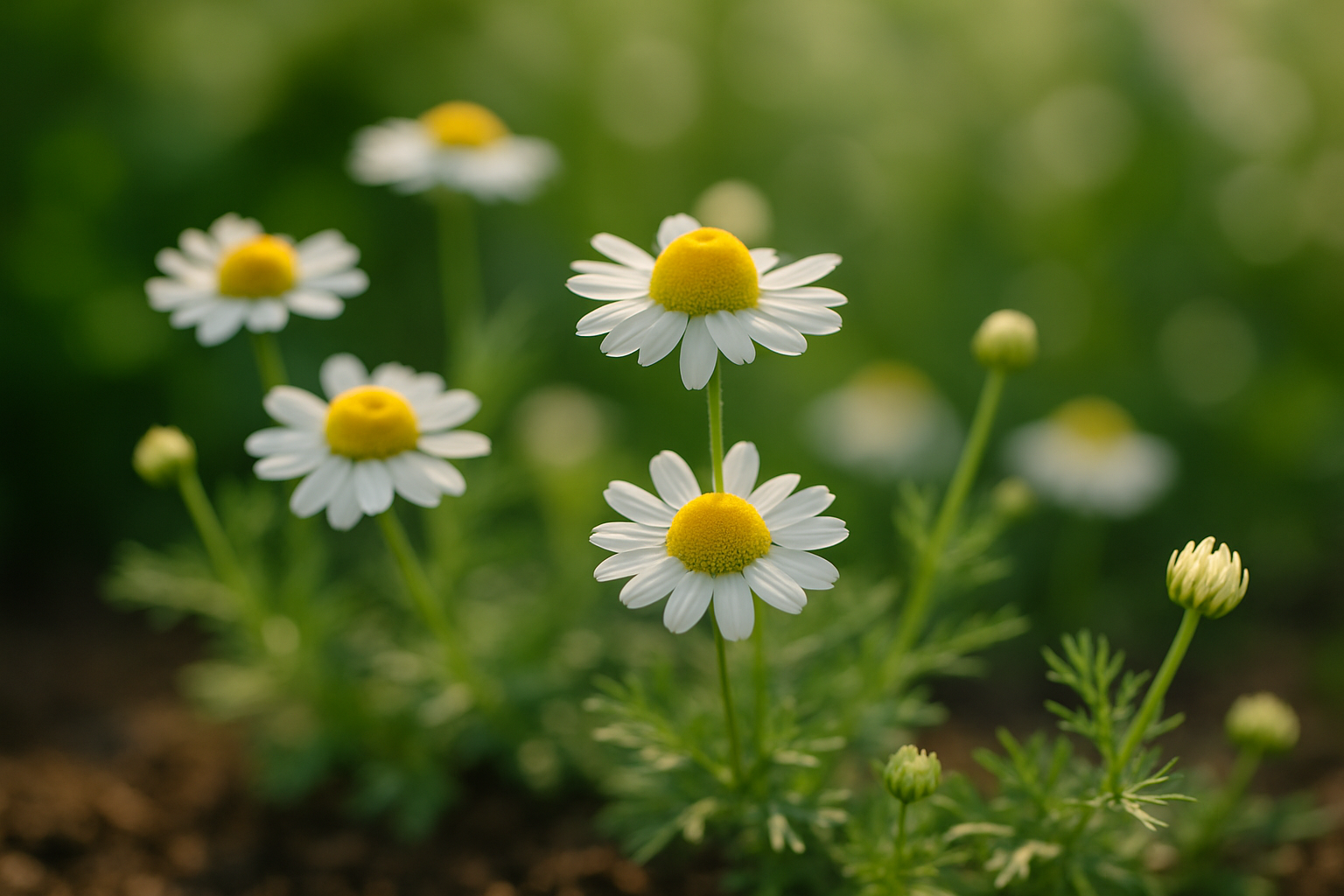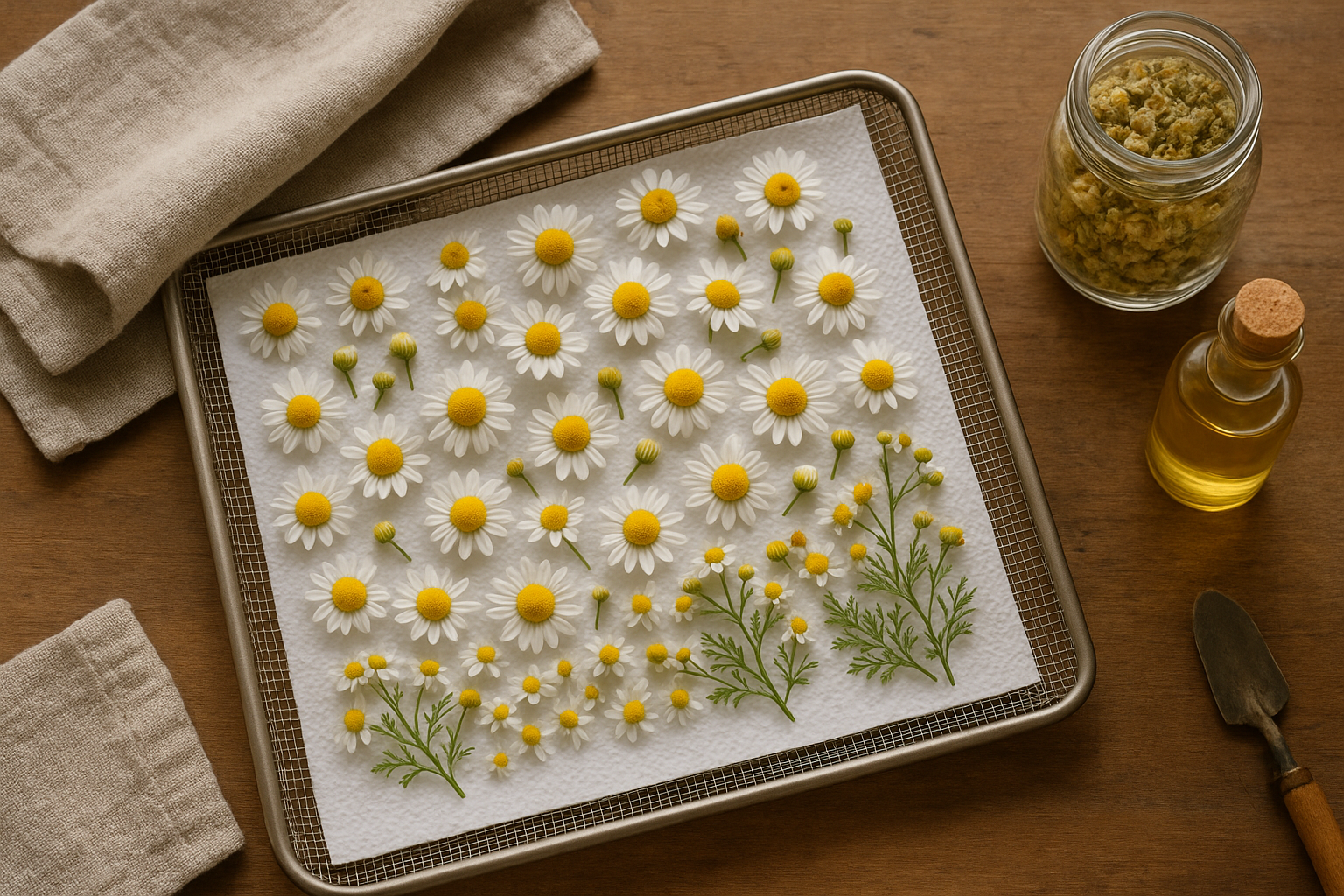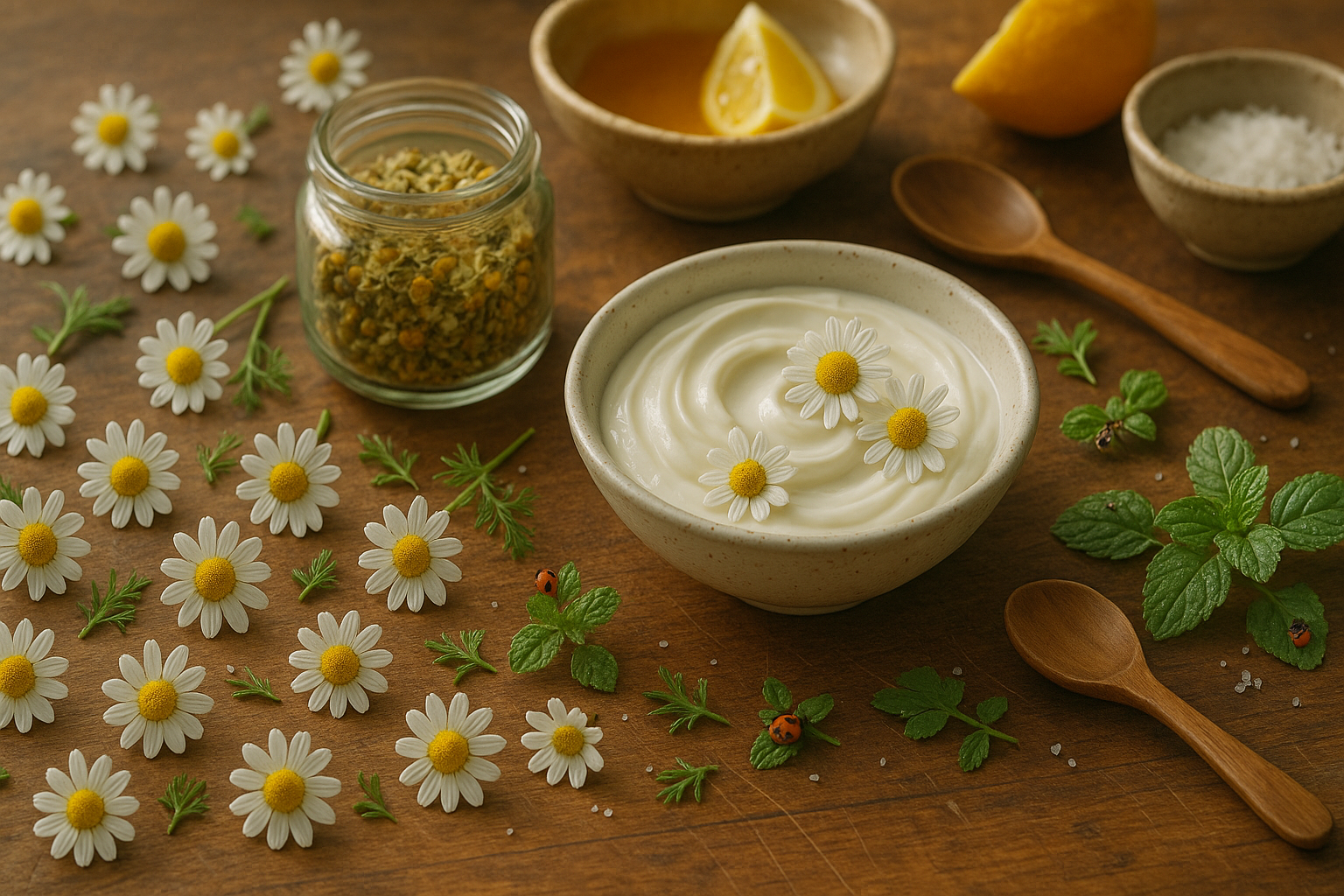Introduction to Cooking with Chamomile
Cooking with chamomile is gaining attention far beyond its traditional role in your evening tea cup. While chamomile has long been celebrated for its calming properties in drinks, its delicate floral flavor and gentle aroma are now making it a rising star in the kitchen.
More home cooks and chefs are discovering how this humble flower can elevate both sweet and savory recipes, adding nuanced notes without overwhelming the dish. With its growing popularity as a culinary ingredient, chamomile is being incorporated into everything from dressings and desserts to infusions and marinades.
Whether you sprinkle dried petals over roasted vegetables or infuse them into syrups and creams, cooking with chamomile opens the door to creative, comforting flavors that surprise and delight the palate. Get ready to explore inspiring ways to bring this unexpected ingredient to your table and transform everyday meals into something memorable.
Chamomile Basics

Chamomile is cherished for its gentle, apple-like flavor and subtle floral aroma, reminiscent of sweet hay or freshly cut apples. This mild, soothing taste sets it apart from stronger herbs like mint or lavender, making it a favorite in calming teas and light desserts.
The most commonly edible parts are the daisy-like flowers, particularly their white petals and yellow centers; the leaves are occasionally used but tend to be more bitter. Sourcing chamomile is easy—dried flowers are widely available in grocery stores, specialty shops, and online, while fresh blooms can be picked from home gardens or foraged (ensure correct identification to avoid toxic lookalikes).
Traditionally, chamomile has been steeped for tea and used to infuse honey, syrups, or baked goods. Modern chefs incorporate the blossoms into cocktails, salad garnishes, and even ice creams for a delicate, fragrant note.
However, be aware that chamomile belongs to the Asteraceae family, so it may trigger reactions in those allergic to ragweed, daisies, or similar plants. Pregnant or nursing individuals and those on certain medications should consult their healthcare provider before consuming chamomile, as it can interact with some drugs or exacerbate sensitivities; moderation is always key.
Health Benefits and Nutritional Highlights
Chamomile is widely recognized for its gentle yet effective health benefits, making it a popular choice for soothing teas and natural remedies. Rich in antioxidants like apigenin and quercetin, chamomile may help combat oxidative stress and support immune health. It’s also known for its calming effects, which can promote relaxation and aid with mild sleep issues—many people enjoy a cup before bedtime for this very reason.
Alongside its antioxidants, chamomile contains bioactive compounds such as flavonoids and terpenoids that have mild anti-inflammatory properties and may contribute to digestive comfort, especially in cases of bloating or mild indigestion. However, it’s important to note that while chamomile is a helpful digestive aid and calming herb, it’s not a cure-all. Claims suggesting it can treat serious illnesses are unproven and should be viewed with caution.
Enjoy chamomile as part of a balanced wellness routine for its gentle, science-backed benefits.
Preparing and Preserving Chamomile for Cooking

Harvesting chamomile for cooking is simple and rewarding. Pick the daisy-like flowers early in the morning when their oils are most potent, choosing blooms that are fully open but not yet drooping. Rinse the flowers gently under cool water to remove dirt and any tiny bugs. Using a soft salad spinner or patting them dry with a clean towel helps avoid damage.
Lay the cleaned blooms in a single layer on a mesh rack or paper towel in a shaded, well-ventilated spot. Allow them to air dry for about a week until they’re crisp and papery.
For storage, keep fresh chamomile in a breathable bag in the fridge for up to a week. Dry chamomile lasts much longer—store it in an airtight jar away from light and moisture for up to six months.
If you want to infuse flavor into oils or syrups, use dried chamomile for oils (to prevent spoilage) by steeping blooms in a mild oil like olive or grapeseed for about two weeks, then straining. Both fresh and dried flowers work well for syrups; simply simmer them in sugar water, then strain for a sweet floral essence perfect for cocktails or desserts.
Always label jars with dates and use the oldest first to enjoy peak flavor.
Creative Ways to Cook and Bake with Chamomile
Chamomile’s gentle, honeyed flavor isn’t just for tea—it’s a fantastic, unexpected ingredient in both sweet and savory cooking. For desserts, try infusing cream or milk with dried chamomile flowers: simply heat your dairy with a tablespoon of dried chamomile per cup, let it steep for 10–15 minutes, then strain before using it for custards, panna cottas, or homemade ice cream. This floral base pairs beautifully with honey, citrus zests, and stone fruits like apricot or peach.
If you’re a baker, fold ground or steeped chamomile into sugar cookies, lemon cakes, or shortbread for a delicate twist—about one to two teaspoons of dried chamomile in your batter will add flavor without overpowering.
Don’t shy away from savory uses, either: a few tablespoons of strong chamomile tea whisked into vinaigrettes, glazes, or even creamy salad dressings provides subtle complexity and brightness that complements spring greens, cucumber, or grilled chicken.
Chamomile pairs especially well with mint, vanilla, ginger, and floral spices such as cardamom, so experiment with how these flavors interact. When starting out, less is more—its floral notes can quickly dominate a dish. Begin with small amounts, then taste and adjust, layering other flavors like lemon or honey to balance and round out the brew.
If you’re looking for a quick introduction, swirl a teaspoon of chamomile-infused honey over yogurt with berries, or drizzle chamomile syrup over pound cake.
With its versatility and calming aroma, chamomile belongs in the kitchen as much as it does in the teacup—just be mindful of its strength and the flavors you choose to enhance its herbal charm.
Recipes and Flavor Pairing Suggestions
Chamomile brings a gentle, floral note that brightens both sweet and savory recipes. Try Chamomile Lemon Scones by steeping dried chamomile buds in warm milk, then folding it into your scone dough with lemon zest. The chamomile mellows the citrus, creating a soothing treat perfect with a cup of Earl Grey or a berry compote.
For a sweet touch, Chamomile-Infused Honey is simple: just simmer chamomile flowers in honey for 10 minutes, let it cool, and drizzle over yogurt, oatmeal, or fresh fruit. The subtle floral undertones pair beautifully with ripe strawberries or peaches.
For something savory, whip up a Chamomile Salad Vinaigrette by steeping chamomile in white wine vinegar, then blending it with olive oil, a dash of honey, and fresh herbs. This bright dressing is perfect tossed with leafy greens, sliced mandarins, and toasted almonds for a refreshing twist.
Chamomile’s soft floral character complements citrus, stone fruit, mild cheeses, and even green teas—try combining it in fruit salads or serving alongside brie for an elegant appetizer. The secret is to let its calming aroma enhance, not overpower, while pairing with fresh, vibrant flavors to bring out chamomile’s best.
Chamomile in Everyday Cooking
Chamomile isn’t just for tea—it can add a gentle floral note to many dishes throughout your day. For breakfast, try stirring dried chamomile flowers into oatmeal or yogurt, or steeping them in milk for pancakes.
At lunchtime, sprinkle a few petals on salads for a unique twist, or infuse olive oil with chamomile to drizzle over grilled chicken or veggies.
In desserts, chamomile shines when infused in syrups for cakes or swirled into ice cream.
Always store dried chamomile in an airtight container away from sunlight and moisture; it typically keeps its flavor and properties for up to a year.
Be mindful that those with ragweed allergies, as well as pregnant or breastfeeding individuals, should consult a doctor before consuming chamomile, as it may trigger reactions or interact with certain medications.
With a little creativity and care, chamomile can be a delightful and safe addition to your kitchen.
Optional
Chamomile’s gentle floral notes make it a surprisingly versatile addition to your kitchen, adding depth to teas, desserts, salad dressings, and even cocktails. While its soothing reputation is well-known, cooking with chamomile can enhance both sweet and savory dishes with a subtle, apple-like aroma.
If you’re new to using chamomile, start by steeping dried flowers in cream for desserts or infusing simple syrups for beverages—just remember, a little goes a long way.
Wondering if chamomile is safe to eat? Yes, dried culinary-grade chamomile is safe, but always avoid ornamental or chemically treated flowers. Can you use it fresh? Absolutely, though dried chamomile is more commonly used for consistent flavor.
